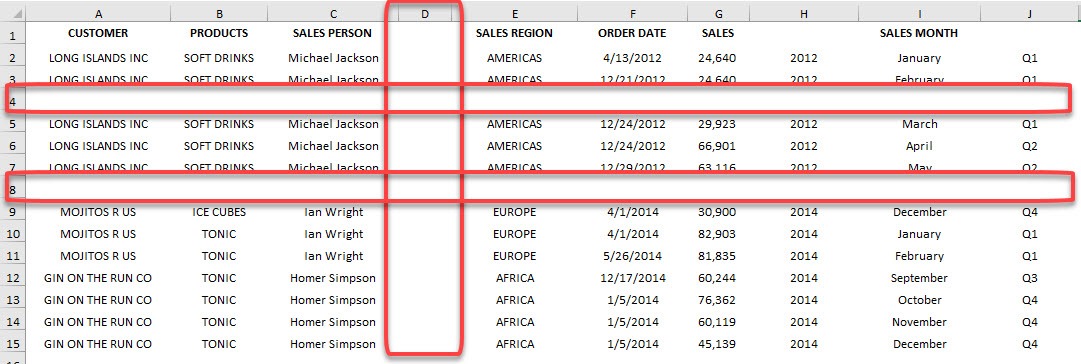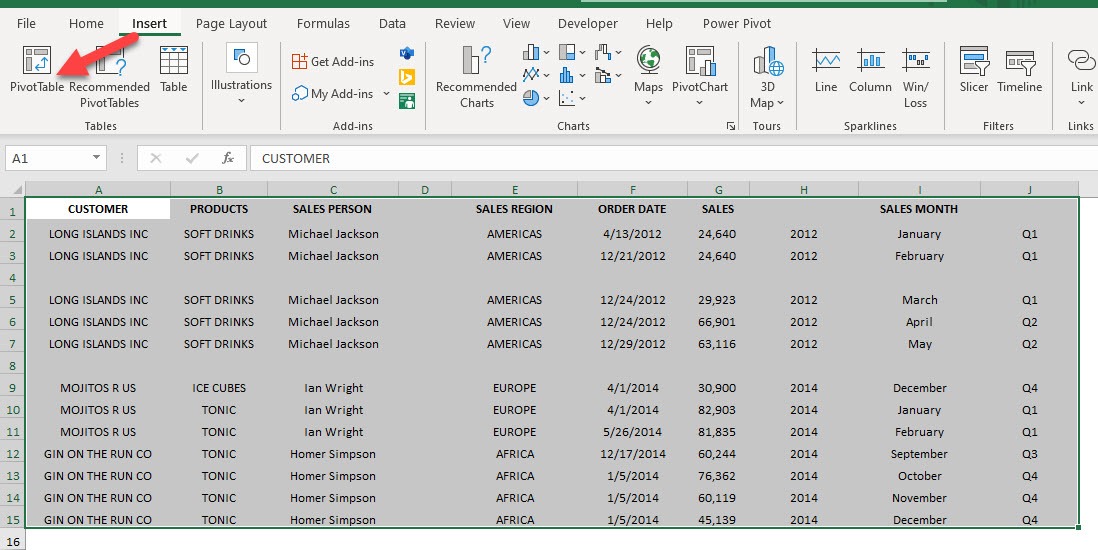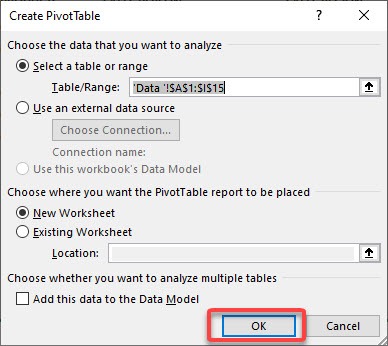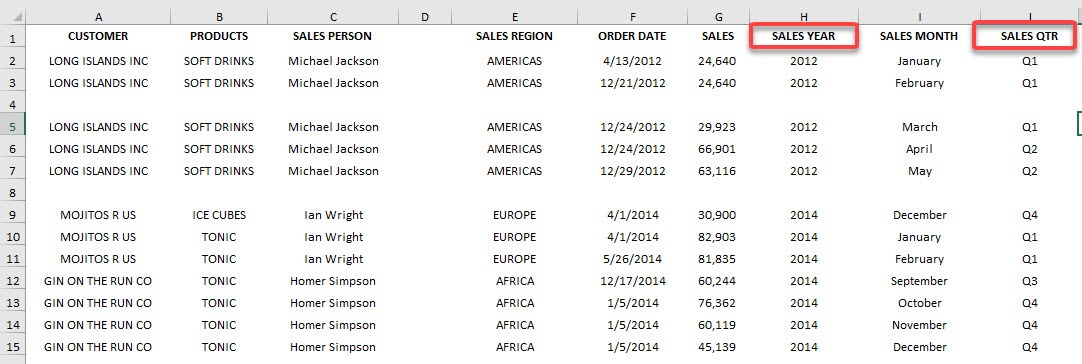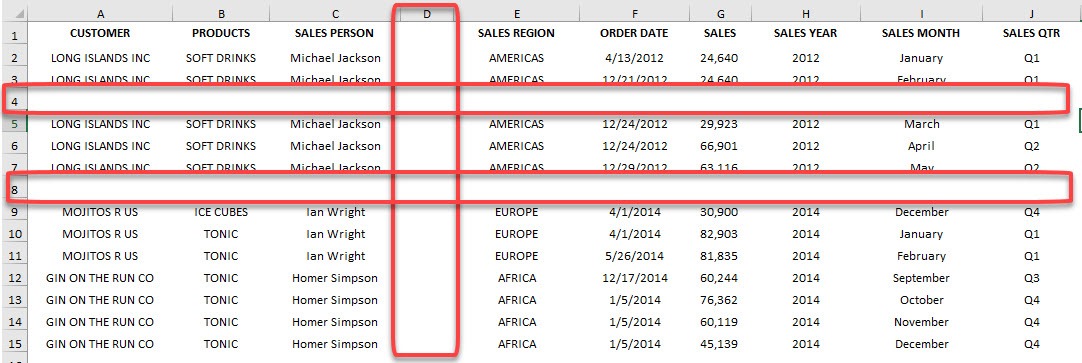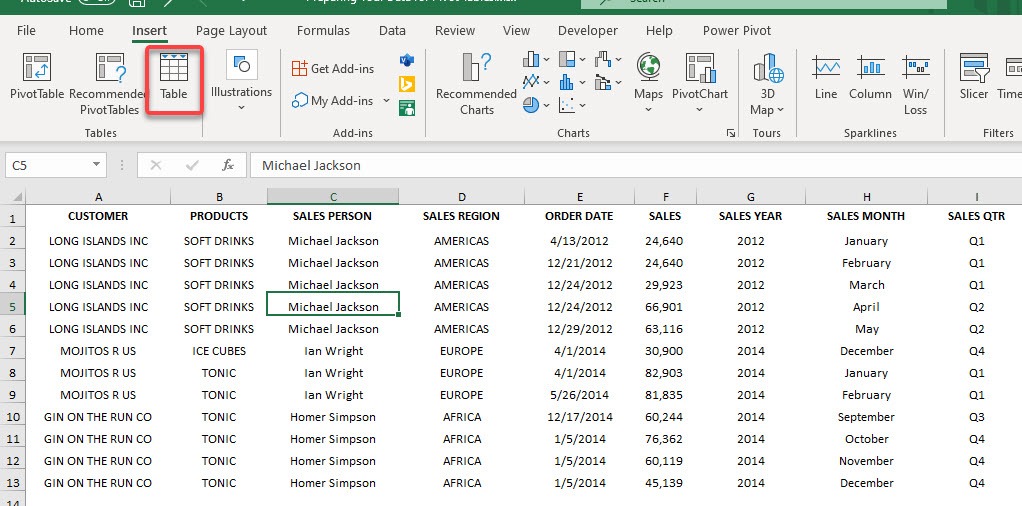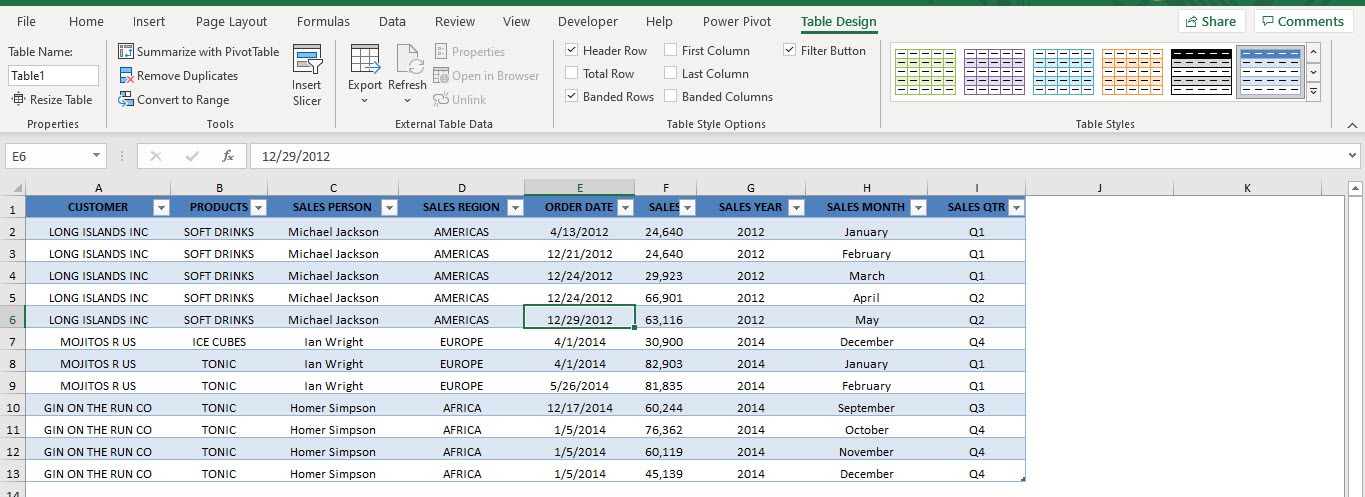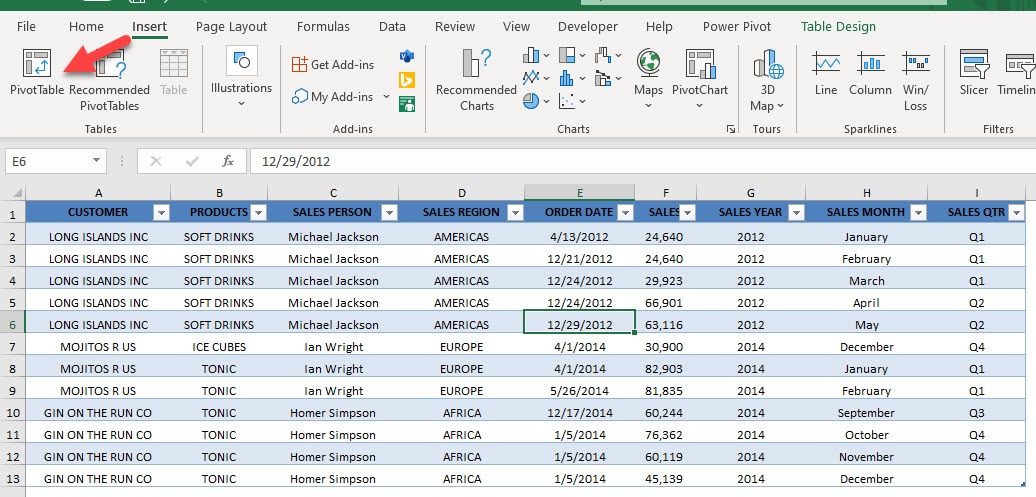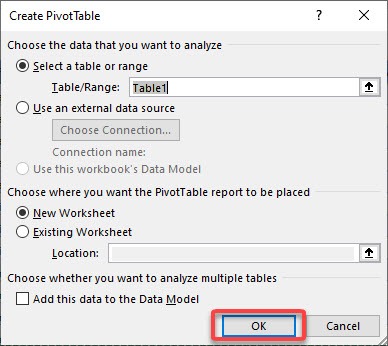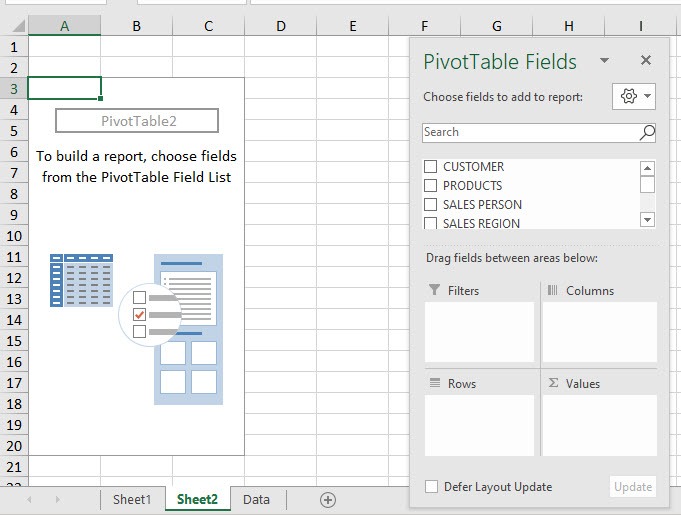- Tabular Format – your data is organized as a list with labeled columns
- No Gaps – no blank columns and no blank rows
- Tables – use this for structured referencing, Excel automatically updates as more rows and columns are added
Then you will be able to harness the full power of Pivot Tables!
Exercise Workbook:
Let us go over the principles one by one! Here is our data set:
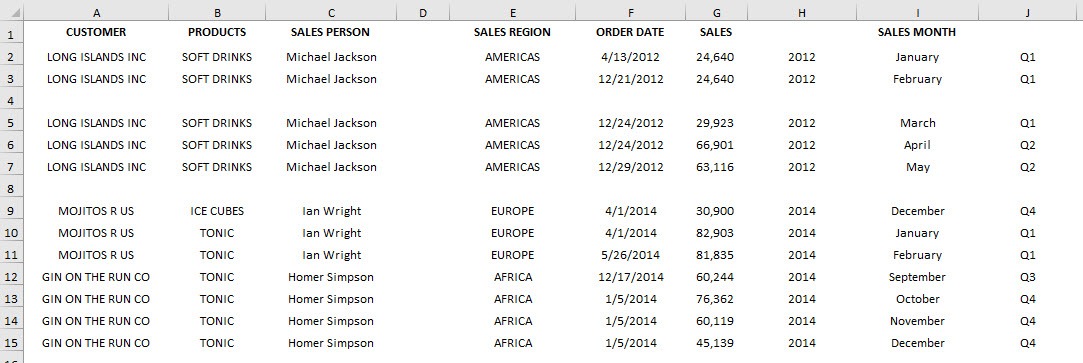
You can see that it has a couple of issues. There are 2 columns without label headers:
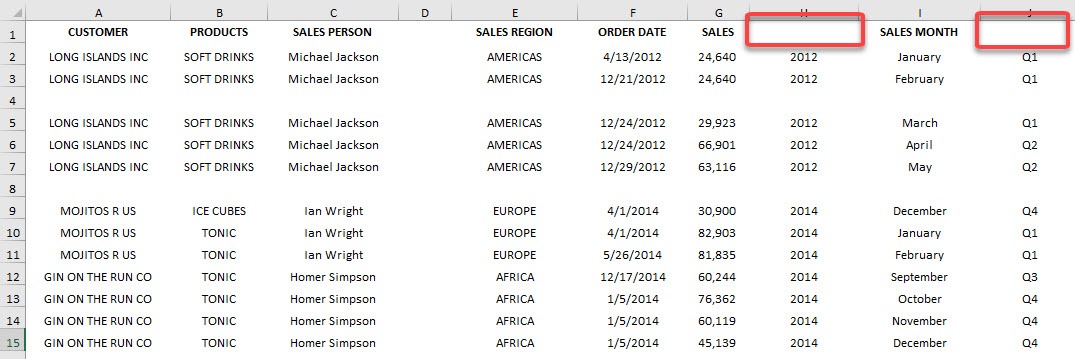
Then we also have 1 blank column and 2 blank rows. Let us get this data cleaned up!
STEP 1: Let me quickly demonstrate to you first that we cannot use this set of data to create a Pivot Table.
Select the entire table of data and Go to Insert > Tables > PivotTable
STEP 2: Click OK
We get this error message because our data is not Pivot Table ready. Let us fix that!
STEP 3: Let us follow the Tabular Format principle. For the blank column headers, add SALES YEAR and SALES QTR:
STEP 4: Now for the No Gaps principle, delete the blank column D and delete the blank rows 4 and 8.
Our data is now looking good!
STEP 5: Go to Insert > Tables > Table to convert this into an Excel Table
STEP 6: Click OK
We have our Excel Table ready! You get a lot more feature here like sorting, filtering, Table Styles to name a few.
Now that you have prepared for data, let’s try and create a Pivot Table again!
STEP 7: Go to Insert > Tables > PivotTable
STEP 8: Click OK to insert the Pivot Table into a new worksheet.
And we are all set!

Bryan
Bryan Hong is an IT Software Developer for more than 10 years and has the following certifications: Microsoft Certified Professional Developer (MCPD): Web Developer, Microsoft Certified Technology Specialist (MCTS): Windows Applications, Microsoft Certified Systems Engineer (MCSE) and Microsoft Certified Systems Administrator (MCSA).
He is also an Amazon #1 bestselling author of 4 Microsoft Excel books and a teacher of Microsoft Excel & Office at the MyExecelOnline Academy Online Course.
